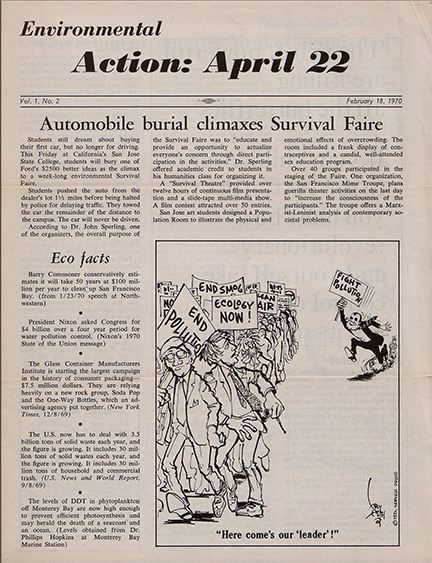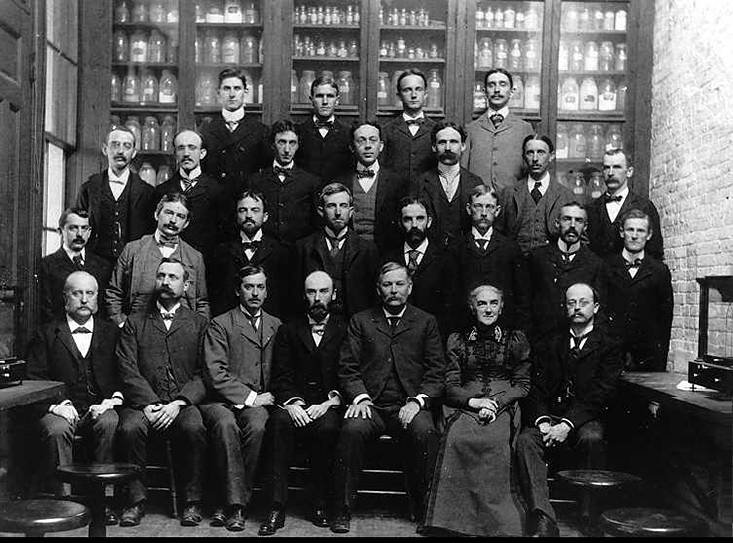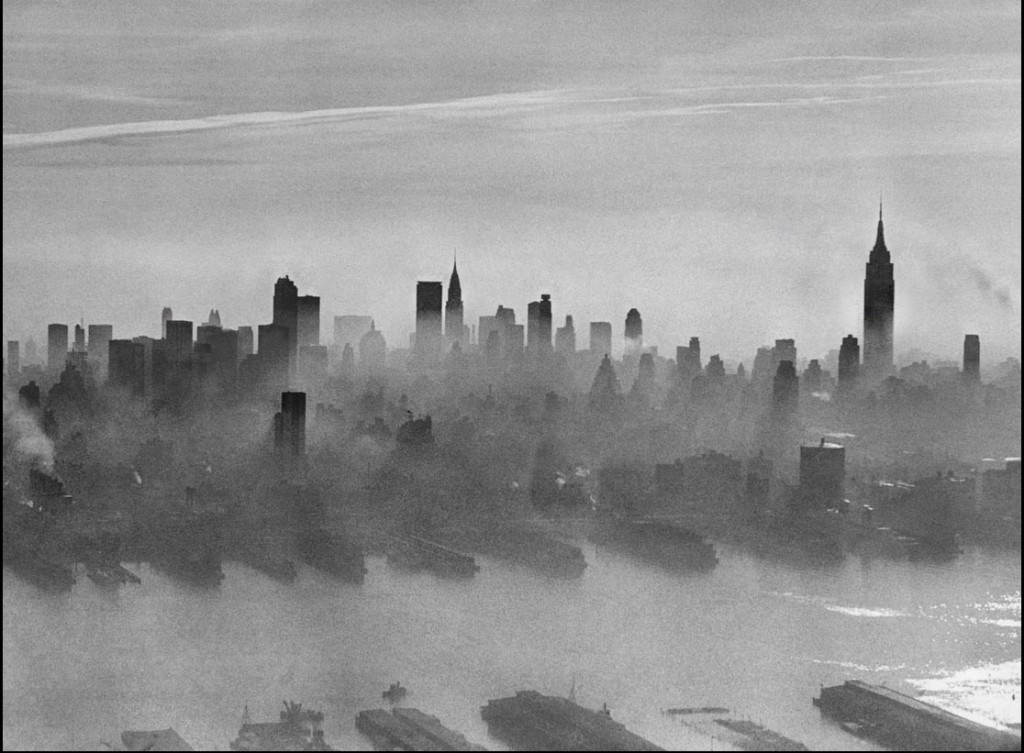By Bill Kovarik
Information about world oil reserves has been skewed for political purposes. Until very recently, everyone believed the Middle East has 2/3 of all the world’s oil. But in fact, the Middle East has only 2/3 of a narrow politically defined category called “proven” reserves. How is it that we were so badly misinformed?
As a very young news reporter in Washington DC in 1979, I was invited to one of those think tank “luncheons” where the speakers chat amiably about the next imminent disaster. This one was about world oil reserves and the possible collapse of the Persian Gulf.
Not surprisingly, all the speakers agreed that a shut-down of the Persian Gulf would be catastrophic and must be prevented at all costs. All the speakers, that is, except one smiling Venezuelan named Alirio Parra, who was then the country’s oil minister. The bottom line of his talk was this: Don’t worry. Venezuela has more oil in the eastern Orinoco region than all the Middle East. And if this seems surprising, he said, your petroleum geologists should be more honest with you.
I remember the shouts of outrage from the assembled policy wonks, one of whom yelled that there was “a journalist here” in the same tone that a Victorian preacher might caution: “ladies present.”
The friendly oil guys at my table tried to steer me right. Everyone knows that Venezuelan heavy oil is not actually oil. Nor is Canadian tar sands juice really oil, either. After all, everyone knows that the Middle East had two thirds of all the world’s oil. The confusing chorus of advice reminded me, at that moment, of the scene in the Wizard of Oz, where Dorothy is told to ignore the man behind the curtain.
As I was leaving, a kindly USGS scientist named Bernardo Grossling took me aside. It’s all in how you define an oil reserve, he told me confidentially. If you only count “proven” reserves, then the oil industry is right. Two thirds of proven reserves are in the Middle East.
On the other hand, if you want to just consider oil in the ground, the Venezuelans were right. There’s far more in Canada and Venezuela than in the Middle East.
The question is whether “proven” is the best yardstick for geopolitical decisions, or even who decides what is, and is not, a proven reserve. If the oil industry is allowed to decide which geological formations are “proven,” then that is what we will base our policies on.
In retrospect, the entire mess is an example of one of the more painful lessons of history: that money and politics and industry influence can seriously distort scientific information.
And it certainly was distorted: Ask any old timer. We all remember the gas lines, the “Oil Crisis,” and the Middle Eastern wars. Those wars were ncessary, we were told repeatedly, because the Middle East had two-thirds of the world’s oil. Not just two thirds of one special category of oil created by the oil industry. Oh, no. ALL the world’s oil. Every bit of it that was known. This statement from Robert Dreyfuss in the March-April 2003 Mother Jones is typical:
If you were to spin the globe and look for real estate critical to building an American Empire, your first stop would have to be the Persian Gulf. The desert sands of this region hold two of every three barrels of oil in the world — Iraq’s reserves alone are equal, by some estimates, to those of Russia, the United States, China and Mexico combined.
So we believed that our only choice was between an economy-crippling oil shortage on the one hand and war in the Middle East on the other. No one ever even questioned it. Every media outlet in the world, every policy analyst in government, every military strategist in the Pentagon swallowed it hook, line and sinker.
So how do we now account for the recent sudden abundance of oil? Mostly weasel words and circumlocutions. The Washington Post says the “center of gravity” for world oil resources has shifted, The Guardian says we were just wrong on peak oil and that the “facts have changed.” Energy expert Daniel Yergin told the Wall Street Journal in 2011 : “Things don’t stand still in the energy industry. With the passage of time, unconventional sources of oil, in all their variety, become a familiar part of the world’s petroleum supply.”
But given the costs — in human life, in the suffering of survivors, to the world economy, to the environment — these weasel words are nothing more than bitter reminders that something went seriously askew and nobody has offered a reasonable explanation.
Given the enormity of the blunder involved here, we need a far better accounting. “I was misinformed,” Humphrey Bogart famously says in Casablanca, and everyone laughs.
But how is it that we were so misinformed? These two versions of a BP world oil chart show the problem.
The first was created by BP in 2002, and the big green bar on the right hand side represents Middle Eastern oil reserves. Obviously, it dwarfs the rest of the world.
The second chart includes data from the USGS World Petroleum Assessment and Analysis of Nov. 28, 2000 that contrasts fairly sharply with the oil industry’s perspective. This wasnt the only petroleum assessment that contradicted the oil industry’s Saudi-centered perspectives, but it was the most public.
The problem was not simply that people believed BP chart #1 and didn’t believe chart #2.
The problem was that the BP type chart was the ONLY data available outside of a few very specialized circles. The BP annual world oil assessment, and similar reports from Shell and Exxon and the federal Energy Information Administration, never referred to the USGS. They never let on that there was any question about world oil reserves. All they ever said was that the Middle East had two thirds of the world’s oil. There was no other point of view available.
Of course the USGS could have done something about it. Back in 2005 I asked a very high level USGS official why the agency did not inform the media, and he said:
“The USGS is not a political agency.”
Asked to clarify, the official said that the Department of Energy was a captive of the oil industry, and there would have been serious political repercussions if USGS had decided it was going to become a political agency and compete with DOE and the oil industry.
It’s hard to imagine a more serious policy misdirection. World energy policy well into the 21st century was based on a technological misrepresentation. Imagine the high place of honor this deserves in the great and crowded museum of misdirections, mendacities and public relations triumphs.
The glass of beer analogy
A few years ago, Dr. Colin Campbell of the Association for the Study of Peak Oil used this analogy: “Understanding [oil] depletion is simple. Think of an Irish pub. The glass starts full and ends empty. There are only so many more drinks to closing time. It’s the same with oil. We have to find the bar before we can drink what’s in it.”
But the analogy of a tankard of beer is only appropriate if we are thinking about individual tanks of gasoline in our separate cars. A better analogy to the world oil industry would involve a street full of pubs and a network of warehouses and distilleries. The price keeps going up because the proprietors of your pub claim to be running out of beer. You can see for yourself, they say, the shelf is almost empty. The Ministry for Pubs says its worried and gives each of the pubs a generous beverage depletion allowance and other tax breaks. And the ministry loudly trumpets the promise that it will eventually ease our dependence on beer while quietly cutting alternative beverage research.
Of course, the best kept secret in town is a huge stockpile of barley, yeast and hops in the warehouse across town. If you even bothered to ask about it in the 1970s or 80s, they’d tell you that it wasn’t “proven” beer. It was only “potential” beer or even “undiscovered” beer. Meanwhile, of course, we had to have a strong army to fight to secure our “proven” sources of beer.
Resource wars and world oil reserves
In 2006, the US Senate Foreign Relations Committee hear testimony from security analyst Milton Copulos, who said: “Without Oil, our economy could not function, and therefore protecting our sources of oil is a legitimate defense mission, and the current military operation in Iraq is part of that mission.”
So the logic of the US wars in the 1992 and 2003 invasions of Kuwait and Iraq was closely tied to the premise of the exclusive nature of Middle Eastern oil reserves. If you buy the premise, you buy the conclusion. Few people ever questioned the alternative premise — that there were might be other sources of oil in the world or even alternatives to oil.
Of course, the invasions of Kuwait and Iraq were not officially acknowledged as being related to oil reserves. They were officially all about Iraq’s invasion of peaceful Kuwait, or Saddam Hussein’s weapons of mass destruction. But of course it was well understood by anyone paying attention that these were actually resource wars.
It’s not that the facts were suppressed in order to go to war. Nobody was forced at gunpoint to believe BP, ExxonMobil, Shell, Chevron, and the US Energy Information Administration and the International Energy Agency and OPEC. Nobody was forced to believe Daniel Yergin when he told us that the Middle East was “The” Prize. Hey, the guy won a Pulitzer, fer gosh sakes.
So a more reasoned view might be that in our haste to protect a resource that seemed threatened, we did not develop alternative sources of information about alternative sources of energy.
We didn’t understand the world oil industry. In fact, we trusted them.
And it was an enormous mistake. Trusting the oil industry might have been one of humanity’s biggest mistakes, it may yet turn out, because the firestorm we unleashed is still burning.
So what’s a “proven” reserve? Does it matter?
The embarrassing scientific reality is that petroleum geologists never really believed that the Middle East had two – thirds of all the world’s oil. It was only two thirds of a special category called “proven” oil reserves.
Any geologist will tell you that it’s wrong to focus on “proven” reserves when you consider long-term strategic goals. As Standard Oil geologist Wallace Pratt said in 1944, it is a “fallacy … [to] cite proved reserves as a measure of available future supplies.”
Yet this is exactly what happened. And the fallacy animated US policy in the Middle East for decades. Why?
The issue is somewhat technical. First, a “proven” oil reserve is not really the opposite of an “unproven” reserve. It’s quite misleading to see it that way, but oil fields that are not “proven” may still be very well characterized by seismic tests and sample drilling, so that a very close approximation of the oil reserve is possible to identify, and the probabilities of recovery are well known.
Along with “proven,” the technical categories of oil reserves that geologists use include: identified, probable, recoverable, potential, and unconventional. In 2007, industry-affiliated geologists adopted two new categories — contingent resources and prospective resources — to account for anomalies in the old proven reserve system.
Economists, analysts and stock brokers stick to proven reserves because the economics of a proven reserve can be plotted down to the penny. Proven reserves are a category that help guide investors who need to know just how easy the oil will be to find and what it will take to lift from the ground. They need to know how light and pure the oil is, how much it will cost to refine, how close the oil is to the marketplace. Oil reserves that fall below a standard index of affordability are not called “proven” reserves under Securities and Exchange Commission rules, and they are not developed because no one wants to lose the money it would take to develop them.
Conventional wisdom has it that investments are based on the world’s proven oil reserves. But it is probably more accurate to say that oil company investments and friendly country policies are what make reserves “proven.”
Proven reserves can be remarkably elastic over time. Geologist M.A. Adelman noted in his book The Genie out of the Bottle that a special WWII mission to Persian Gulf estimated Saudi Arabia’s oil reserves at 16 billion proved and 5 billion probable. This was 1944. Thirty years later, those same fields were estimated at 42 and 74 billion. In 1984, geologists estimated another 199 billion barrels of probable reserves in the Gulf region. Today the proven reserve figure is about 265 billion according to OPEC and BP.
For the entire Middle East, the proven reserve figures are around 650 billion barrels, or about two-thirds of a world total of around one trillion. But petroleum geologists have long known this is far too “conservative” an estimate, and too heavily slanted to the Middle East.
There is no doubt that the traditional hostility between Latin American nations and the oil industry, once at least nominally American, had been a factor holding back oil reserve estimates in Venezuela and Mexico. Nor is there any doubt that the under-counted Latin American reserves would have upset OPEC production quotas if they had suddenly been counted in the 1980s and 90s.
So by using the economic definition of an oil reserve, as opposed to the scientific definition, the oil industry in effect pulled a slight of hand and reset the premise of the world geo-strategic energy debate. No doubt it was misleading, and intentionally so. Usually, even the word proven was dropped from most news articles and government agency reports about world oil reserves. So people naturally thought that the Middle East had two thirds of ALL the world’s oil, and nobody in government or the oil industry took it upon themselves to challenge that notion.
The usual explanation, repeated in this Wikipedia article, is that “the total amount of unconventional oil resources in the world considerably exceeds the amount of conventional oil reserves, but are much more difficult and expensive to develop.”
But the fact is that Canadian and Venezuelan tar sands and heavy oils require only a fraction more of their total sale price to upgrade, as compared to conventional oil. And the narrowness of the categories of conventional oil have blinded us to its overall abundance.
So now we have the information equivalent of the BP gulf of Mexico blowout of the Fukushima disaster. We now know the vast extent of the Marcellus Shale gas reserves and the Canadian oil sands and the Arctic reserves. We now know that there were trillions and trillions of barrels of oil in the geosynclinal trough from the Orinoco River to the Falkland Islands.
Imagine if we had known that in the 1980s and 90s. The sad thing is, we did. Or at least, the scientists did.
Bottom line: One of the most important lessons of history is that money can submerge science. That is, interested industries can control the premises of information and set the terms of the debate. If anything, this underscores the need for better scientific information about major resource policies and geo-strategic planning.
And one last point: Never again should we trust the oil industry with information about vital public policy issues. They have a history that people should understand. After all, these are:
- The boys of Standard Oil that journalist Ida Tarbell exposed in 1904;
- Our friends behind the Teapot Dome oil scandal of 1924;
- The ones who tried to hush up in the leaded gasoline disaster of 1925;
- Those nice guys who who fueled up Nazi submarines on the high seas in 1940-41;
- The fellows who gave high octane fuel technology to the Nazis and blocked synthetic rubber production in the US, hoping, apparently, to end up on the winning side of World War II;
- Our grinning friends who tried to convince us that farm fuels were bad for your engine and bad for the economy in the 1970s.
- The ones who got the US government to send your sons and daughters to die in the Persian Gulf and the Iraq wars because (they claimed) two thirds of all the world’s oil was to be found there.
Now we hear that the “market” has only recently “discovered” Canadian and Venezuelan oil. It’s unbelievable.
UPDATES:
- Adm. Dennis Blair notes that the Middle Eastern wars were really all about oil. Article in Desmog Blog. March, 26, 2014.
- Will fracking make the Persian Gulf irrelevant? Global Post, May 30, 2013.
- The Price of Oil March 12, 2008 More Wars: A former CIA director and a former senator argue that America’s current energy policy is a recipe for a less safe world. Daily Beast, Aug. 5, 2010.
BOOKS
M.A. Adelman, The Genie out of the Bottle: World Oil since 1970, (Cambridge: MIT Press, 1995). Adelman’s basic argument is that economic factors limit (and thus, may also expand) reserve estimates.
IMPORTANT INSIGHTS
- Alfred Cavallo, “Oil: The illusion of plenty,” Bulletin of Atomic Scientists, January/February 2004, Volume 60, No. 1, pp. 20-22, 70 .
- ( My comment: Where Cavallo goes wrong is in considering only three types of reserve. He doesnt mention a fourth type called “unconventional.” Cavallo says its naive to think oil wont run out. But if you take the USGS bottom line (2272 billion) and add the USGS minimum for unconventional oil (2000 billion) then divide by 27 billion per year consumption, that’s 158 years. — Bill Kovarik )
- Kennneth S. Deffeyes, Hubbert`s Peak, web site with many links concerning world oil reeserve estimates and production.
- Charles Hall, Pradeep Tharakan, John Hallock, Cutler Cleveland, and Michael Jefferson, Hydrocarbons and the evolution of human culture, Nature, VOL 426, 20 NOVEMBER 2003. “The world is not about to run out of hydrocarbons, and perhaps it is not going to run out of oil from unconventional sources any time soon. What will be difficult to obtain is cheap petroleum, because what is left is an enormous amount of low-grade hydrocarbons, which are likely to be much more expensive financially, energetically, politically and especially environmentally. As conventional oil becomes less important, society has a great opportunity to make investments in a different source of energy, one freeing us for the first time from our dependence on hydrocarbons. For this task we must use all of our science, both natural science and social science, more intelligently than we have done so far.” (PDF link from Hubbert Peak site).
- B.F. Grossling, “In Search of a Probabilistic Model of Petroleum Resources Assessment,” in Energy Resources, M.Grenon, Ed., IIASA, 1976
- Jean Laherre, Forecast of oil and gas supply to 2050, Hydrocarbons Resources, Petrotech 2003, New Delhi (on the web at http://www.oilcrisis.com/)
- Charles D. Masters, Emil D. Attanasi, David H. Root, World Petroleum Assessment and Analysis, U.S. Geological Survey, Nov. 28, 2000. http://energy.er.usgs.gov/products/papers/WPC/14/text.htm#INTRO
- R. Nehring, Giant Oil Fields and World Oil Resources, Rand, Santa Monica, June 1978
- Peter Odell and Kenneth Rosing,(1980) The Future of Oil (London: Kogan Page,, 1980).
- Peter Odell, Oil and Gas: Crises and Controversies 1961 –2000. Volume 1: Global Issues (Multi-Science Publishing Company, 5, Wates Way, Brentwood, Essex CM15 9TB, UK).
- Peter Odell, A guide to oil reserves and resources, Greenpeace report on climate change and the arctic, found at http://archive.greenpeace.org/~climate/arctic99/reports/oilreserve.html and at http://archive.greenpeace.org/~climate/arctic99/reports/odell317.html January 3, 2003. Also see Greenpeace oil reserve report.
- Peter Odell, Why Carbon Fuels will Dominate the 21st Century’s Global Energy Economy (Multi-Science Publishing Company, 5, Wates Way, Brentwood, Essex CM15 9TB, UK — http://www.multi-science.co.uk/whycarbon.htm — Odell says: “Oil supply will likely be more demand than resources constrained – given the demand-side preference for gas for technical and commercial, as well as environmental, reasons. The remaining 2000×109 barrels of recoverable conventional oil resources will sustain over 50% of oil demand until almost 2060. Thereafter non-conventional oil will take the leading role. The latter’s output will peak only in the penultimate decade of the century and by 2100 its resource-base will be little more than half-depleted. In spite of oil’s relative decline as an energy source the industry will, nevertheless, be larger in 2100 than it was in 2000.”
- Wallace B. Pratt, Vice President, Standard Oil Company (New Jersey), “Our Oil and Natural Gas Reserves,” Chapter V, in ed. Leonard M. Fanning, Our Oil Resources, (New York: McGraw Hill Book Co. Inc., 1945). See esp. p. 123.
- Uppsula University Hydrocarbon Depletion Study Group — Founded in January 2003, the group has governmental support from the Swedish Energy Agency and industrial support from Lundin Petroleum.
- US Department of Energy World Crude Oil and Natural Gas Reserves, January 1, 2000. On the web at: http://www.eia.doe.gov/emeu/iea/table81.html, accessed December 2002. These are oil industry studies. Why not use USGS?
- US Geological Survey World Petroleum Assessment and Analysis, Nov 28 2000. On the web at http://energy.er.usgs.gov/products/papers/WPC/14/table1.htm accessed December 2002.
- University of South Carolina Conventional Petroleum Reserve and World Petroleum Consumption Tables.
- Visotsky, VI., et al, Ministry of Geology, Moscow, Petroleum Potential of the Sedimentary Basins in Developing Countries.
- Prof. David L. Roper’s Fossil Fuels Depletion resource pages.
BROKEN LINKS
- American Association of Petroleum Geologists 2003 conference included a session on heavy oils.
- Ignacio Arcaya,(2001) Ambassador of Venezuela to the United States of America, “Venezuela and the United States: A Four-Pillar Strategy for Energy Security,” Remarks to theBusiness Council for International Understanding Petroleum Club of Houston Houston, Texas. July 24, 2001
- Colin Campbell and John H. Laherrere, “The End of Cheap Oil,” Scientific American magazine March 1998. Discoveries of new supplies of oil are declining and oil production will most likely peak in the first decade of the 21st century, leading to higher oil prices and more reliance on the Middle East for our energy supplies.
- “Too Little Oil for Global Warming,” New Scientist, Oct. 5, 2003. “Oil and gas will run out too fast for doomsday global warming scenarios to materialise, according to a controversial analysis presented this week at the University of Uppsala in Sweden. The authors warn that all the fuel will be burnt before there is enough carbon dioxide in the atmosphere to realise predictions of melting ice caps and searing temperatures… [Swedish] geologists Anders Sivertsson, Kjell Aleklett and Colin Campbell of Uppsala University say there is not enough oil and gas left for even the most conservative of the 40 IPCC scenarios to come to pass. Although estimates of oil and gas reserves vary widely, the researchers are part of a growing group of experts who believe that oil supplies will peak as soon as 2010, and gas soon after.
- Bauquis, Pierre-Rene, What Future for Extra Heavy Oil and Bitumen, the Orinoco Case, World Energy Council, undated, accessed via Web
- WEC-CCR, Executive Summaries of World Energy Conference Conservation Commission Report, World Energy Resources, 1985 – 2020, IPC Science and Technology Press, Guildford, pp. 15-16 and pp. 46-47.
- World Crude Oil and Natural Gas Reserves, US Department of Energy, Energy Information Administration. (Links to updated 2007-2009 site) These oil reserve estimates have recently been given with additional footnotes explaining, for example, that one half of the Kuwait Neutral Zone reserves are now assigned to Kuwait. (Why only one half is not stated). Very recently a disclaimer was added by the Energy Information Administration, which now says it “does not attempt to develop estimates for foreign countries. As a convenience to the public, EIA makes available foreign fuel reserve estimates from other sources, but it does not certify these data..” EIA sources for world oil reserve estimates in the table above are from the following oil industry trade publication estimates: (1) PennWell Publishing Co.,Oil and Gas Journal, Vol 97, No. 51, December 1999.
(2) Gulf Publishing Co., World Oil, Vol 221, No. 8, August 2000 Note that the Department of Energy does not use USGS government statistics. When asked why, DOE did not comment and USGS said it was “not a political agency.” (3 and 4) USGS World Petroleum Assessment and Analysis (2000 figures — Updates are available at this site)




 Walt Whitman,
Walt Whitman, Hillary and Norgay climb Mount Everest
Hillary and Norgay climb Mount Everest
 Environmental Action Archive
Environmental Action Archive Ellen Swallow Richards
Ellen Swallow Richards The hats that created bird sanctuaries
The hats that created bird sanctuaries  Pollution regs saved lives
Pollution regs saved lives ¶ A giant tree's death sparked the conservation movement in 1853. Terrific article by Leo Hickman of the Guardian on June 27, 2013. The
¶ A giant tree's death sparked the conservation movement in 1853. Terrific article by Leo Hickman of the Guardian on June 27, 2013. The ¶ Dymaxion car
¶ Dymaxion car  ¶ Aldo Leopold
¶ Aldo Leopold